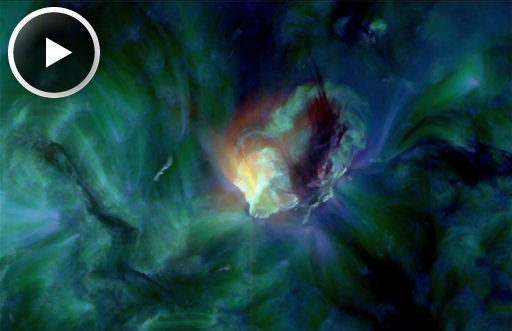Decaying sunspot AR1667 erupted on Feb. 6th, producing a double-peaked C9-class solar flare that lasted more than ten hours from beginning to end. The slow explosion hurled a twisting, inky-dark plume of plasma into space. NASA’s Solar Dynamics Observatory recorded the spiral:
The darkness of the material is a sign that the plasma was dense and cool relative to the surrounding atmosphere of the sun. This isn’t the first time that the sun has produced a dark explosion. Since the launch of Solar Dynamics Observatory in 2010, researchers have catalogued many instances of cool plasma emerging from flare sites. “Cool” has a special meaning, however, on the sun. The temperature of the dark blobs is “only” about 20,000 K vs. 40,000 K to 1,000,000 K for the gas in the surrounding atmosphere.
Decaying sunspot AR1667 probably won’t erupt again. NOAA forecasters put the odds of a significant (M-class or stronger) flare today at 10% or less.


